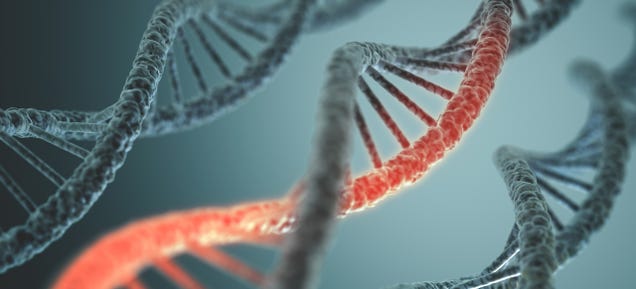
WEDNESDAY, May 7, 2014 (HealthDay News) -- Move over, Frankenstein! Your 21st-century counterpart has just been announced. In true sci-fi fashion, a team of researchers from The Scripps Research Institute (TSRI) in La Jolla, Calif., has created a brand-new bacteria based on a genetic structure found nowhere on Earth. According to lead researcher Floyd Romesberg, the feat involved artificially engineering a unique combination of DNA material -- a combination not found in any living creature -- and then successfully inserting it into a living cell that usually contains only natural combinations of DNA.
"Life on Earth in all its diversity is encoded by only two pairs of DNA bases, A-T and C-G," Romesberg explained in an institute news release. "And what we've made is an organism that stably contains those two plus a third, unnatural pair of bases." "This shows that other solutions to storing [genetic] information are possible," he added, "and, of course, takes us closer to an expanded-DNA biology that will have many exciting applications -- from new medicines to new kinds of nanotechnology." Romesberg and his colleagues discuss their handiwork -- funded in part by the U.S. National Institutes of Health -- in the May 7 online edition of Nature. The product of more than 15 years of work, the current effort builds on a proof-of-concept study conducted in 2008.
At that time, investigators had shown that hooking up natural and unnatural pairings of DNA was possible in a test-tube setting. The next challenge was to replicate the process inside a living cell. The cell chosen by the TSRI team was the common E. coli bacterium, and into it they inserted what they considered to be the best unnatural DNA pairing they could construct: a combination of two molecules called "d5SICS" and "dNaM". After leaping through a series of highly complex technical problems, the study authors finally managed to pull off their goal: the fashioning on a half-synthetic organism that could actually replicate its unnatural self as long as scientists continuously supplied it with the necessary molecular material. Romesberg said that, in principle, his team's high-concept work has a very practical purpose: to gain a "greater power than ever" to fashion new treatments by harnessing the power of genetics.

After 15 years of work, scientists have successfully created a living cell that contains two unnatural DNA building blocks. The breakthrough brings us one step closer to being able to synthesize cells that can produce drugs on demand. It even opens the door to a future where we could create life that's unlike anything ever found on Earth.
"What we have now is a living cell that literally stores increased genetic information," explains Floyd Romesberg, who has led the research for the past decade and a half. It's also worth highlighting that we've convinced natural life to live in harmony with synthetic genetic material—which is huge. After all, we've created synthetic DNA before. But this is a new kind of cyborg DNA, and it's potentially much more powerful.
Nature refers to these artificial bases somewhat extravagantly as "alien." And while scientists certainly aren't dealing with aliens from space, they are dealing with something entirely foreign. Life on Earth has always contained the same four DNA subunits—also known as nucleotides—represented by the letters A, T, C, and G. Now, the possibilities are seemingly endless, as scientists have literally expanded that alphabet to include at least two new, unnatural subunits.
That said, we now know that the old four-letter DNA model isn't the only way to create life. Some even think that it's possible to create an organism solely out of the foreign nucleotides. These bear little resemblance to the four natural ones according to Steven Benner, who pioneered this type of research back in the 1980s. "I don't think there's any limit," Benner toldNature. "If you go back and rerun evolution for four billion years, you could come up with a different genetic system."
So that's pretty mind-bending. However, it's also incredibly hopeful as this kind of science could help us do great things like cure cancer. That is, if we don't accidentally create some new kind of cancer first. [Nature]
Link : http://health.usnews.com/health-news/articles/2014/05/07/scientists-create-1st-living-organism-from-artificial-dna?src=usn_tw

No comments:
Post a Comment